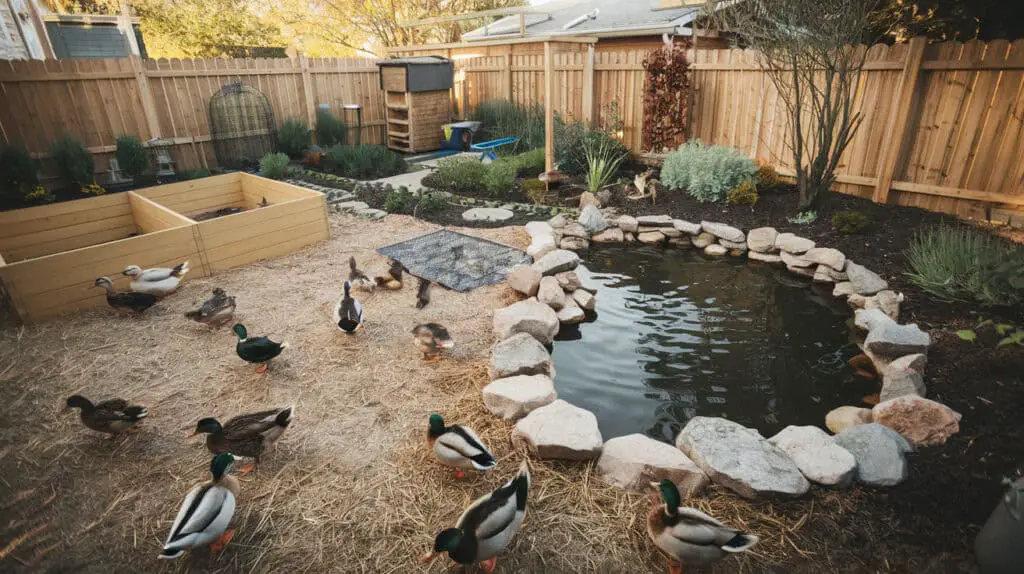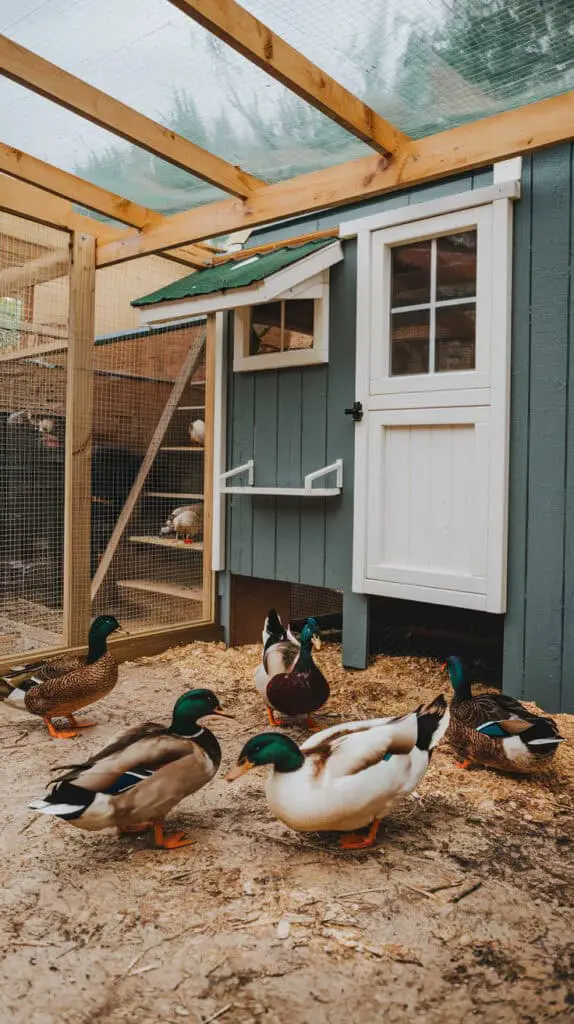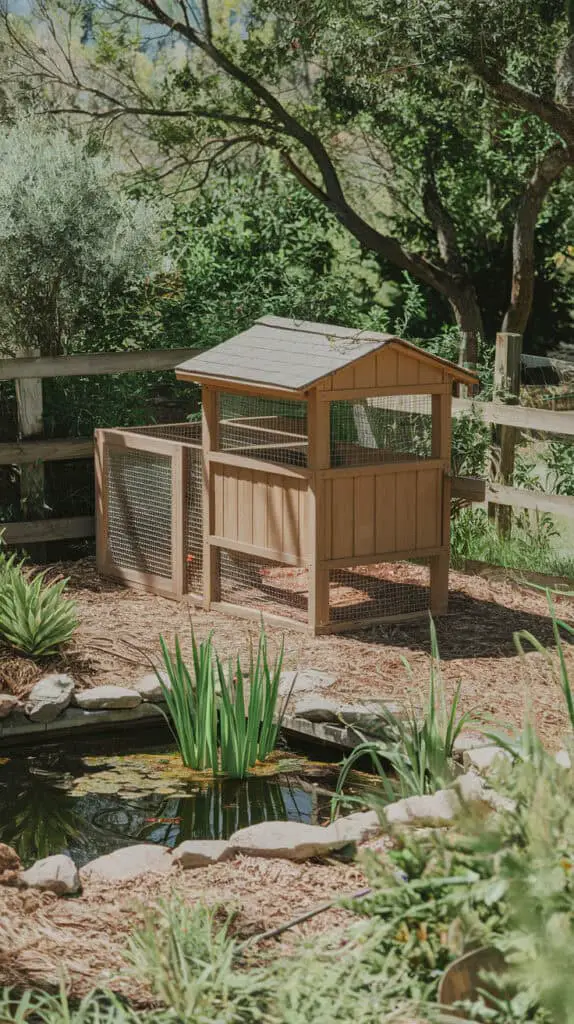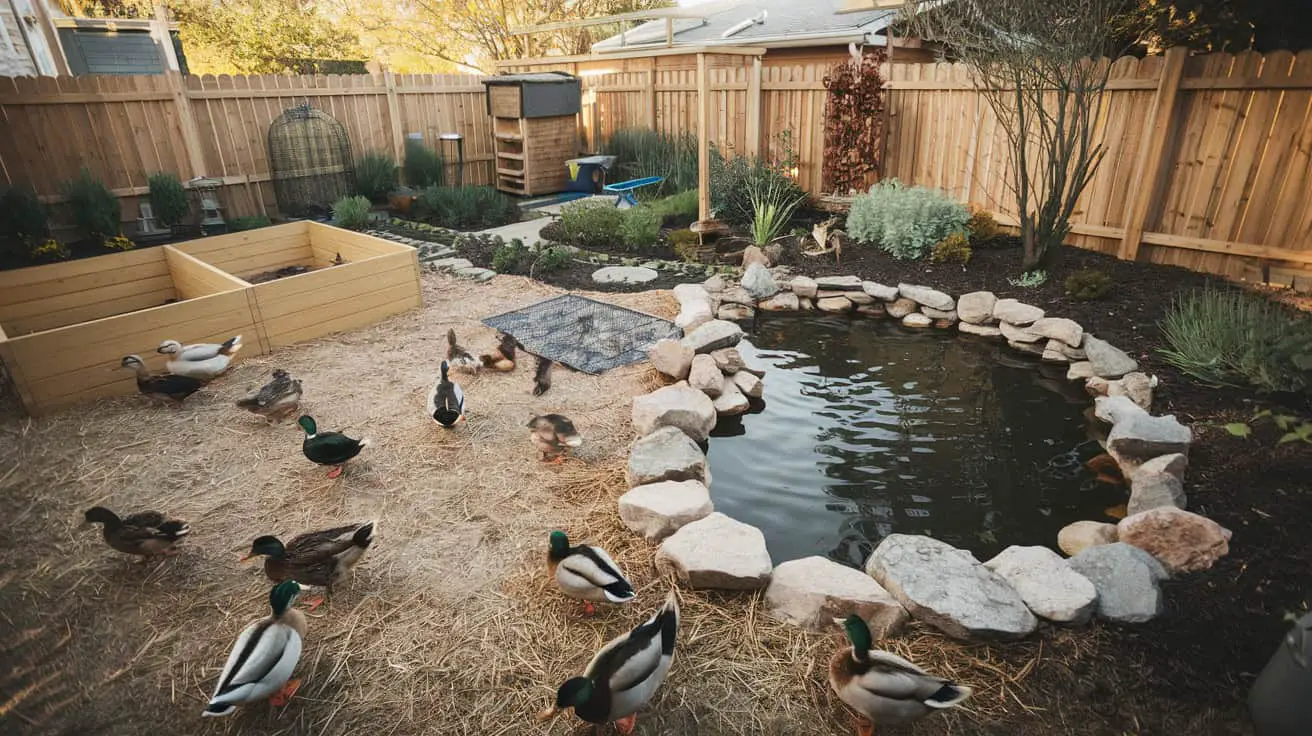
If you’ve ever spent time with ducks, you already know they’re messy little charmers. They splash water like toddlers, nibble everything, and poop approximately every three minutes. But they’re also full of personality, super entertaining to watch, and surprisingly good garden companions.
So when it comes to building a fence for your duck area, the goal isn’t just keeping them safe—it’s creating a space that actually works. You want something that’s spacious, secure, and (as much as possible) clean. Whether you’re new to backyard ducks or upgrading your current setup, here’s how to make your duck enclosure feel like a little homestead oasis—for them and for you.
Start with the Right Layout: Spacious Duck Enclosure Basics

Before you even hammer in a fence post, take a minute to sketch out your duck area. Ducks need room—not just to walk, but to waddle, dabble, flap, and stretch. A general rule is about 10 square feet per duck for outdoor space, but more is always better.
Try to divide the space into sections:
- A dry sleeping area (coop or duck house)
- A grassy or mulched day space
- And of course—a splash zone for their water fun
For fencing, hardware cloth is your best friend. Chicken wire keeps chickens in, but doesn’t keep predators out (or ducks safe). Go with ½-inch hardware cloth for the bottom 2–3 feet, and you can layer in larger wire above that for airflow and budget-friendliness. Make sure the fencing is buried at least 6–10 inches underground to stop curious diggers like foxes or raccoons.
If you’re housing ducks and chickens together, it’s totally doable—but give them their own “rooms” inside the same fence. Ducks are wetter, messier, and louder in the morning. Chickens just want their dry roost and drama-free breakfast.
Water Without the Mudslide: Smarter Duck Pond Ideas

A pond is like Disneyland for ducks. But it will turn into a mud pit without a little planning. If you’re dreaming of those Pinterest-worthy duck pond backyard DIY setups, here’s what makes the difference: location, drainage, and routine.
Place your duck pond or kiddie pool at the lowest end of your enclosure (ducks are splashy, gravity is helpful). Use gravel, sand, or flagstone around the edges so you don’t get standing water or mud holes.
Need a low-effort option? A raised plastic tub with a ramp and a nearby drain hose is a great starter pond. You can drain and refill it without walking away covered in sludge. If you’re thinking long term, dig out a shallow pond with a liner and natural stone border—bonus points for a little duck-safe aquatic plant cover.
Dry Zones That Actually Stay Dry: Duck Coop and House Ideas

A clean duck run starts with a dry sleeping space. Ducks don’t roost like chickens, but they still need somewhere warm, dry, and predator-proof at night.
You can go full farmhouse mode with large duck house plans or keep it simple with a DIY duck house from a repurposed garden shed. Just make sure it has:
- A sloped roof for runoff
- Ventilation that’s covered in hardware cloth
- A solid floor with straw or pine shavings (cleaned out weekly)
- And an easy-clean door—because morning duck poop is a lot
If you’re housing ducks and geese together, plan a bit more space and keep nesting corners separate. Geese can get territorial, and ducks like a little quiet corner when laying eggs.
Keep It Low-Stress: Duck Pen Design That Works with Nature

Your fencing and coop setup will work best when it blends in with your natural yard. Use duck coop DIY ideas that follow the shade in summer, block wind in winter, and give your ducks the option to go inside or out. Shade cloth over part of your fence is a budget-friendly upgrade for summer heat, and planting native shrubs along the outside can help with wind and privacy.
A duck pen with mulch or chopped straw underfoot helps keep feet dry and mud to a minimum. It’s also great for absorbing water near the pond and giving ducks a soft surface to waddle on. Rotate bedding or rake out wet spots weekly—your nose will thank you.
And hey—if you’re converting a shed into a duck coop, just know you’re not alone. Some of the best setups start with an old tool shed and a bit of imagination (plus a few hours with a drill).
Creating a clean, spacious duck area isn’t about perfection. Ducks will still splash, snack, and make a mess—but with the right fence, thoughtful layout, and a few smart pond tricks, you’ll have a setup that works with your flock’s habits, not against them. And once you get it all running smoothly, it’s honestly pretty fun to watch.
They might not say thank you—but the happy tail wags, loud quacks, and sparkling clean feathers will say it for them.

